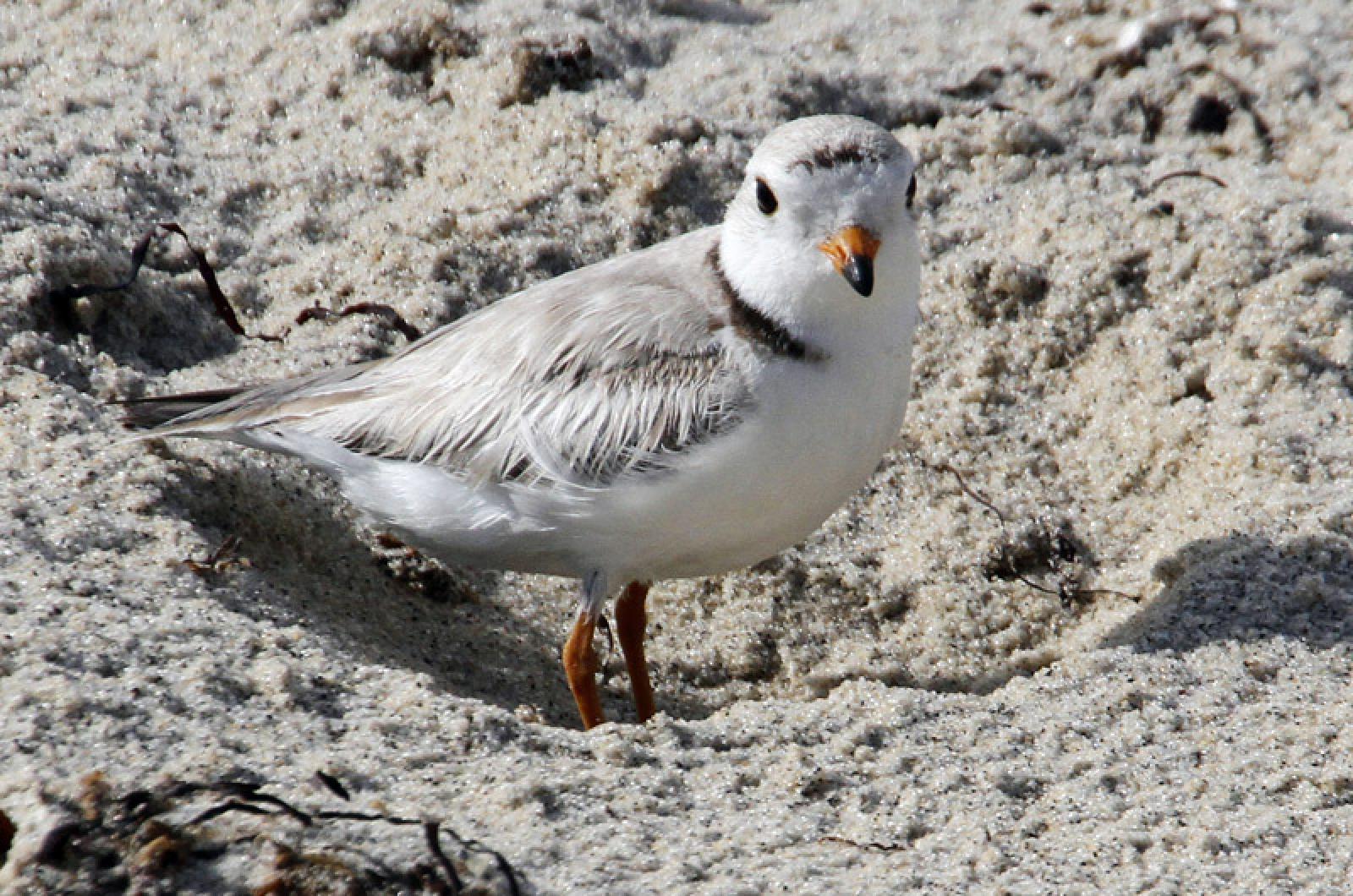With piping plovers enjoying a major comeback in the state, new regulations may allow communities to reclaim beaches that would otherwise be closed to protect the nests and chicks in the spring.
The state Division of Fisheries and Wildlife has spent more than a year developing a new habitat conservation plan for plovers that would streamline the process for communities to gain permits for foot and even vehicle traffic in some nesting areas.
A final draft was submitted to the U.S. Fish and Wildlife Service for review in the fall, and federal officials hope to open a public comment period by the end of January.
Massachusetts has 35 to 40 per cent of the piping plovers on the Atlantic seaboard, according to the DFW, and has alone exceeded the regional target of 625 breeding pairs. About eight per cent of breeding pairs in 2013 were counted on Martha’s Vineyard, with about 60 per cent on the Cape and six per cent on Nantucket.
The piping plover (Charadrius melodus) is listed as threatened under both the state and federal Endangered Species Acts, although the federal act allows some flexibility for management agencies in the form of incidental-take permits.
Jonathan Regosin, chief of conservation science for the Natural Heritage and Endangered Species Program, who helped develop the state plan, said plover numbers have greatly increased in the last 25 years. “That’s great news, but it also leads to potentially bigger impacts on recreational activity,” he told the Gazette this week.
He attributed the success to “terrific habitat” in the state, especially on the Cape, and the cooperation of beach managers who put up fencing in the spring and take other steps to restrict foot and vehicle traffic in nesting areas.
Plovers arrive on area beaches around late March and lay their eggs in the sand. Chicks often hatch in May or June and begin running right away. But they can’t fly for weeks, making them vulnerable to vehicles and pedestrians, especially since they blend in with their surroundings. Temporary fencing can help protect the eggs from predators.
The mere presence of people and dogs may cause stress for the birds and interfere with their ability to forage and grow, or protect the nests.
But some plovers are becoming more tolerant of people and each other, said Susi von Oettingen, an endangered species biologist with the fish and wildlife service. “They are starting to pile up in some areas where the recreational access is really being restricted,” she said. “Unreasonably so, almost.”
In one case, plovers tried to nest beside a lifeguard stand in Yarmouth, which would have closed the beach. In the future, management agencies could apply to relocate a nest, although doing so may still affect the birds.
On the Vineyard, many surfcasters have complained about limited access on Chappaquiddick and other beaches. Frustration grew last year after the Norton Point breach closed in April, reconnecting Chappy to the mainland. A few weeks later, all of Cape Pogue was closed to over-sand vehicles.
The state habitat conservation plan is the first of its kind for piping plovers in New England, and various stakeholder groups, including Mass Audubon Society, The Trustees of Reservations, Massachusetts Beach Buggy Association and BiodiversityWorks (in Vineyard Haven), have provided comment along the way.
Once the fish and wildlife service finishes its environmental assessment, the draft plan will be available online. To save time, however, the public comment period will likely not include any public hearings, Ms. von Oettingen said. The state hopes to put the plan into effect in the spring.
In the past, communities that wanted to move a nest or allow continued access in a nesting area needed to develop their own habitat conservation plans and apply for a federal permit, although only the town of Orleans has taken that route.
Under the new rules, a management agency like the Trustees could simply apply to the DFW to relocate a nest or allow over-sand access, as long as it also mitigated the potential loss. That might mean increased predator control, law enforcement, or education and outreach.
Russell Hopping, ecology program director for the Trustees, expected the plan to benefit public access on Chappaquiddick, but questioned whether it would be ready in time for the coming season. He said a permit for Chappy would most likely be used to allow escorted vehicle access in one or two targeted areas.
Mr. Hopping welcomed the plan as a next step in the ongoing conservation efforts in the state. “There has been a tremendous success story around the restoration of piping plovers,” he said. “It’s fantastic news, actually, that we can even entertain this.”
BiodiversityWorks manages more than half the nesting sites on the Island. But most of those sites are on private property, and director Luanne Johnson did not expect to apply for a permit. “We would help a landowner who wanted to, but I don’t foresee that happening,” she said.
It’s unclear how many communities in the state might apply for permits this year. “I think it’s going to ramp up over time,” Mr. Regosin said. “There has been a fair amount of interest, and other towns that haven’t been directly involved in the development of it are just starting to learn about it.” As an early guess, though, he thought between five and 10 communities might apply in the first year.
He was confident the new rules would benefit both people and plovers. “It really is, in our minds, a win-win, where we are increasing recreational flexibility but we are also advancing conservation.”
The draft habitat conservation plan will be available for public review and comment at federalregister.gov.








Comments
Comment policy »